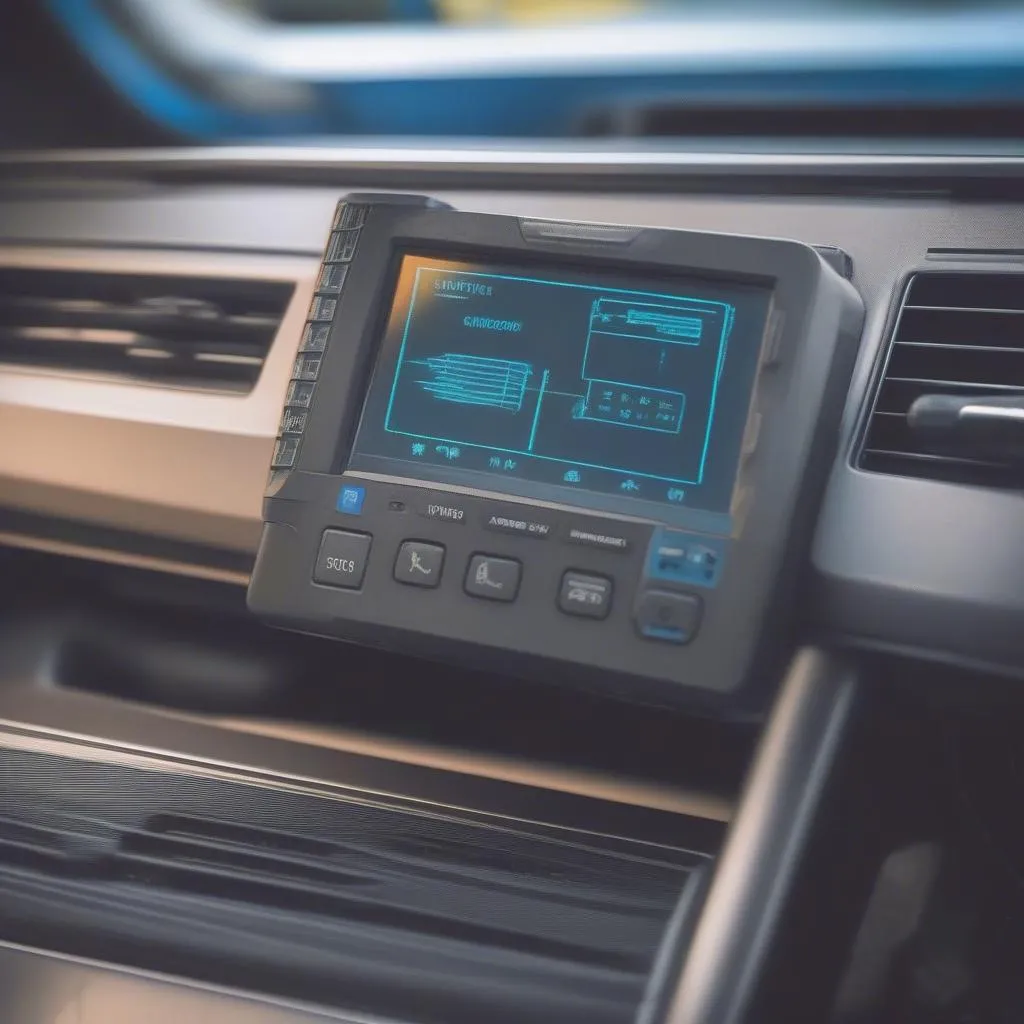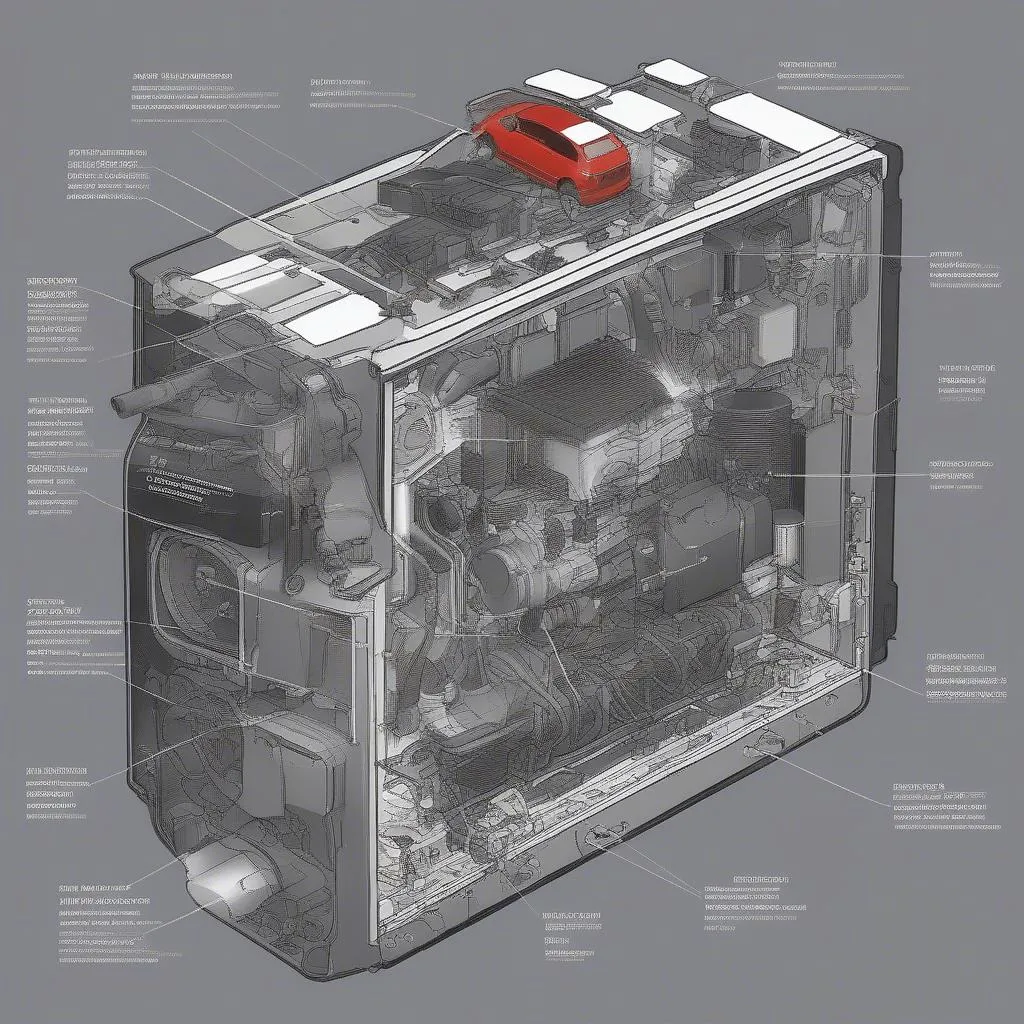Have you ever wondered what that small, rectangular port hidden beneath your car’s dashboard is for? It’s called the OBD port, and it’s the key to unlocking a world of information about your vehicle’s health. It’s like a secret door that allows technicians and even car owners to delve into the inner workings of their vehicles.
Let’s dive deeper into what the OBD port is and why it’s so essential for understanding your car’s performance.
What is the OBD Port?
The OBD port, short for On-Board Diagnostics port, is a standardized connector found in most modern cars and light trucks. It serves as a communication link between your vehicle’s computer (also known as the Engine Control Unit or ECU) and a diagnostic scanner.
Imagine the OBD port as a bridge connecting the complex language of your car’s computer to a human-readable interface. Think of it like a translator, enabling you to understand the information your car is trying to convey.
The Importance of the OBD Port in Modern Vehicles
The OBD port has revolutionized the way we approach car maintenance and repair. Before its advent, diagnosing car problems was a complex and often time-consuming process involving trial and error. But with the OBD port, technicians can quickly identify and address issues by reading diagnostic trouble codes (DTCs) stored in the ECU.
These DTCs act like “error messages” that pinpoint specific problems within the engine, transmission, or other vehicle systems. It’s like having a digital “check engine light” that provides specific details about the underlying issue.
Why is the OBD Port So Crucial?
1. Vehicle Diagnostics:
The OBD port allows mechanics and car owners to access real-time data from your car’s ECU, providing valuable insights into engine performance, fuel consumption, and other crucial functions. This data can help you make informed decisions about maintenance and repair, ensuring your car runs smoothly and efficiently.
For example, a mechanic can use a diagnostic scanner connected to the OBD port to monitor engine temperature, fuel pressure, and oxygen sensor readings to diagnose potential issues before they become major problems.
2. Understanding Your Car’s Health:
The OBD port allows you to be proactive about vehicle maintenance. It’s a great tool to track fuel economy, identify potential issues early, and monitor emissions levels. This empowers you to address problems promptly, avoiding costly repairs and potential breakdowns.
3. Troubleshooting Engine Issues:
The OBD port is essential for diagnosing engine-related problems. By reading the DTCs, mechanics can identify the specific components or systems that are causing trouble. This allows them to pinpoint the exact cause of the problem and implement the necessary repairs quickly and efficiently.
Common Uses of the OBD Port:
1. Reading Diagnostic Trouble Codes (DTCs):
The OBD port enables you to access DTCs stored in your car’s ECU, providing valuable information about any issues the car is experiencing. These codes are crucial for troubleshooting and identifying the root cause of a problem.
2. Monitoring Vehicle Performance:
The OBD port allows you to access real-time data about your car’s performance, including engine speed, fuel consumption, and other critical parameters. This information can be used to monitor the car’s health and identify potential issues.
3. Emissions Testing:
Many states and countries require regular emissions testing, and the OBD port is used to ensure your car meets the required standards. The diagnostic scanner reads data related to emissions and determines if your car is compliant.
Finding the OBD Port in Your Car
Most OBD ports are conveniently located underneath the dashboard, typically on the driver’s side. It’s often hidden behind a small panel, near the steering column, or under the fuse box. The OBD port is usually marked with a standardized logo that resembles a circle with a “P” inside, often accompanied by the letters “OBD.”
Troubleshooting OBD Port Issues
While the OBD port is typically a reliable feature, there are instances when you might encounter problems accessing it. If your diagnostic scanner isn’t able to communicate with your vehicle, there could be a few reasons:
- Damaged OBD Port: Over time, the OBD port can become damaged, resulting in poor contact. This can be caused by physical impact, corrosion, or excessive use.
- Loose Connections: If the diagnostic scanner isn’t properly connected to the OBD port, you might experience communication problems. Double-check that the connector is securely in place.
- Fused OBD Port: In rare cases, the OBD port fuse might blow, preventing communication. Check the fuse box to ensure the OBD port fuse is intact.
FAQ About Vehicle OBD Ports:
Q: Can I use a diagnostic scanner to reset the “check engine” light myself?
A: Yes, many diagnostic scanners can clear DTCs and reset the “check engine” light. However, it’s important to understand that simply resetting the light won’t fix the underlying problem. You should address the issue causing the light to illuminate to prevent further damage to your car.
Q: What are some benefits of using an OBD scanner on a regular basis?
A: Regularly scanning your vehicle can help you catch issues early, monitor performance, and improve fuel efficiency. It can also help you identify potential problems before they become major, saving you time and money in the long run.
Q: Is the OBD port available in all car models?
A: Most modern cars manufactured after 1996 in the USA and many other countries have an OBD port. However, some older models may not have this feature.
Conclusion:
The OBD port is an invaluable tool for understanding your car’s health and addressing any issues that may arise. By understanding the significance of the OBD port and the information it provides, you can be a more informed and proactive car owner.
Whether you’re a seasoned mechanic or just starting to learn about your car, the OBD port can be a valuable asset. It empowers you to take control of your vehicle’s maintenance and keep it running smoothly for years to come.
For further assistance with diagnostics tools, our team of automotive experts is available 24/7. Please feel free to contact us at WhatsApp: +84767531508 for any questions or support.
Let us know what you think in the comments below! Share your experiences with the OBD port and any insights you’ve gained from using it.
 OBD Port Scan
OBD Port Scan
 OBD Port Location
OBD Port Location
 Engine Control Unit (ECU)
Engine Control Unit (ECU)